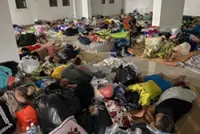As every last Saturday of the month is slated to become national e-waste collection day in Malaysia, here's how you can play your part by properly disposing of unwanted electronic items. — 123rf.com
The saying “it takes a village” can also be applied to improving e-waste recycling efforts in Malaysia, as a strategic community approach is needed to properly discard electrical items.
“Realistically, it would be difficult for just one person within a community like a housing area or in a condo building to be able to dispose of e-waste successfully,” said Dr Tan Ching Seong, an associate professor at the Faculty of Engineering in Multimedia University.
Already a subscriber? Log in
Save 30% OFF The Star Digital Access
Cancel anytime. Ad-free. Unlimited access with perks.





